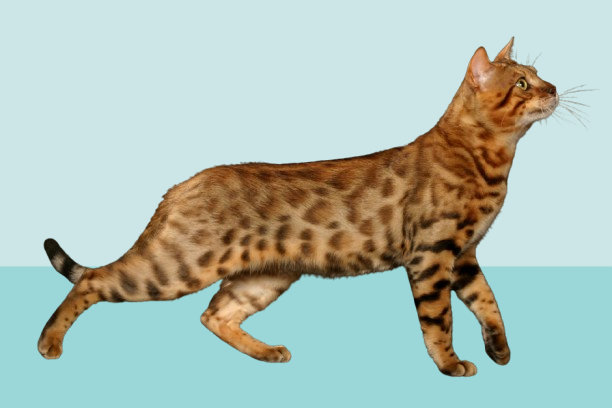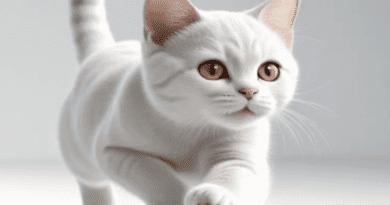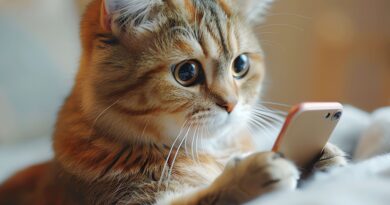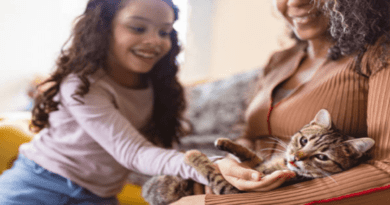Crossbreeding and Hybrid Cats
Techniques, Breeds, and Ethical Insights
The world of cat breeding is vast and multifaceted. Breeders use various techniques to enhance traits or develop new breeds with unique characteristics. Two of the most intriguing methods are crossbreeding and hybridization. These involve blending different breeds or species to combine desirable traits or create entirely new ones. This guide dives deep into crossbreeding and hybridization, their purposes, notable examples, and important ethical considerations.
Understanding Crossbreeding and Hybridization
Crossbreeding refers to mating two distinct domestic cat breeds. The goal is to combine traits from both parents, whether for appearance, temperament, or health benefits. Breeders may, for instance, combine cats known for their affectionate nature with others prized for their striking coats.
Hybridization, however, is a more complex practice. It involves mating domestic cats with wild species to create hybrids. These cats often inherit both physical and behavioral traits from their wild ancestors. Hybrid cats can be captivating, but their wild characteristics may also make them more demanding as pets.
Purposes of Crossbreeding and Hybridization
1. Enhancing Traits
Breeders often cross domestic cats to enhance specific traits. This can include coat color, fur texture, temperament, or health. For example, a breeder might mate a sleek short-haired cat with a more muscular breed, aiming to combine the best qualities of both. Crossbreeding allows for the creation of cats with a blend of physical and personality traits that appeal to pet owners.
2. Developing New Breeds
Breeders also use crossbreeding to create entirely new breeds. By selecting parent cats with complementary traits, they develop unique combinations that meet desired standards. Over time, this process can establish a new breed that gains recognition in the cat community. These new breeds often offer distinct characteristics that stand out among traditional breeds.
3. Introducing Wild Traits
Hybridization introduces wild characteristics into domestic cats. For some enthusiasts, the allure lies in a cat with a wild appearance or behavior. Hybrids often display features from their wild ancestors, such as spotted or striped coats, larger body sizes, or more independent temperaments. These hybrids can appeal to those looking for a more adventurous feline companion.
Notable Hybrid Cats
Several hybrid breeds have become popular due to their striking looks and unique behaviors. Here are some prominent examples:
Bengal Cat
- Origins: The Bengal cat results from crossbreeding domestic cats with the Asian leopard cat. Developed by Jean Mill in the 1980s, this breed blends the wild look of a leopard with a domestic cat’s approachable personality.
- Appearance: Bengals are known for their striking spotted or marbled coats, giving them a mini-leopard appearance. They have a muscular build, with a sleek and athletic body that reflects their wild ancestry.
- Temperament: Bengals are active, intelligent, and require regular engagement. Their playful nature means they need interactive playtime to remain mentally and physically stimulated.
Savannah Cat
- Origins: The Savannah cat comes from crossing domestic cats with the African serval. First developed by Judee Frank in the 1980s, this breed attracts attention for its tall, elegant appearance.
- Appearance: These cats boast long legs, large ears, and a wild, spotted coat. Their serval lineage gives them a distinctive, regal look.
- Temperament: Savannah cats are highly energetic, curious, and loyal. They can be trained to perform tasks, much like a dog, and are often described as adventurous companions.
Chausie
- Origins: The Chausie breed was created by crossing domestic cats with the jungle cat, native to various regions across Africa and Asia. Breeders sought to bring a wild touch to a domestic setting.
- Appearance: Chausies have a muscular, lean body with a short coat that varies in color and pattern. Their appearance combines elegance and a touch of wilderness.
- Temperament: Known for their intelligence and curiosity, Chausies need mental and physical stimulation. They enjoy exploring and engaging with their environment, making them ideal for active homes.
Ethical Considerations in Crossbreeding and Hybridization
Crossbreeding and hybridization have sparked many discussions in the cat breeding community. While these practices produce fascinating cats, they also raise ethical questions.
1. Health and Genetic Concerns
Hybrid cats, particularly those with wild ancestors, may inherit health issues from their wild relatives. Breeds like the Bengal, for example, may carry genes linked to specific diseases. Responsible breeders conduct thorough genetic testing to avoid passing on harmful conditions to future generations.
2. Complex Care Requirements
Cats with wild lineage often have more demanding care needs. Hybrid cats may require specialized diets, extra mental stimulation, or environments that allow for greater freedom to explore. Potential owners must educate themselves on the unique needs of hybrids and be prepared to offer the right environment for their well-being.
3. Ethical Breeding Practices
Ensuring ethical breeding practices is essential for the health and welfare of both parent cats and their offspring. Responsible breeders prioritize the health and temperament of their cats, adhering to strict guidelines. They avoid excessive inbreeding and ensure all animals receive proper medical care and socialization.
Embracing the Complexity of Cat Breeding
Crossbreeding and hybridization play a significant role in the diversity of cat breeds today. Whether you’re drawn to the wild beauty of hybrid breeds or the unique combination of traits in crossbred cats, these practices offer endless possibilities. Cats like the Bengal, Savannah, and Chausie highlight the captivating blend of domestic and wild traits that appeal to enthusiasts around the world.
However, breeding cats—especially hybrids—requires responsibility and knowledge. Ethical breeding practices, understanding health risks, and providing appropriate care are crucial to maintaining the welfare of these extraordinary animals. Whether you’re considering adopting a hybrid cat or simply fascinated by the complexities of cat breeding, it’s important to be informed and thoughtful about the choices involved.




